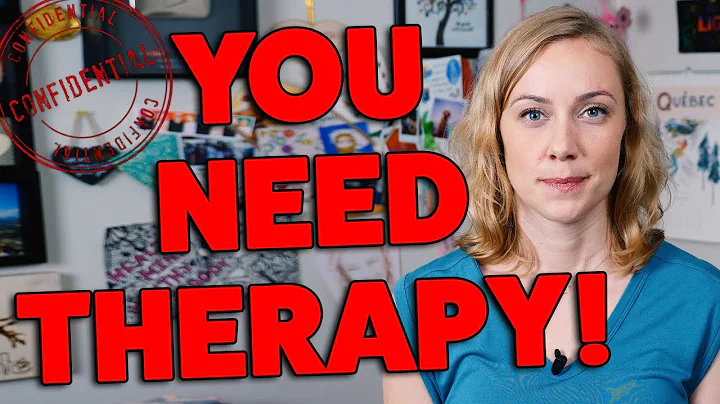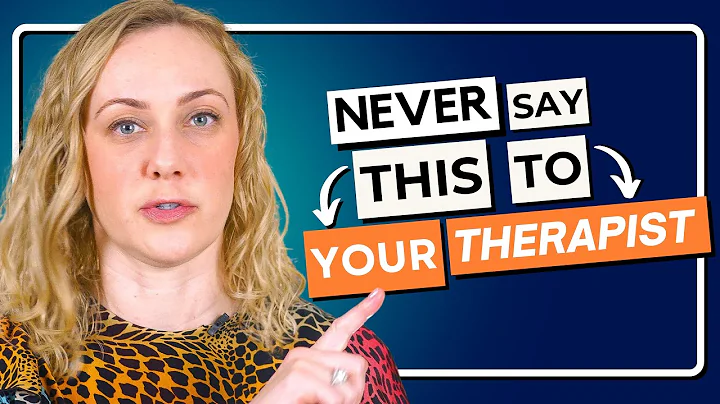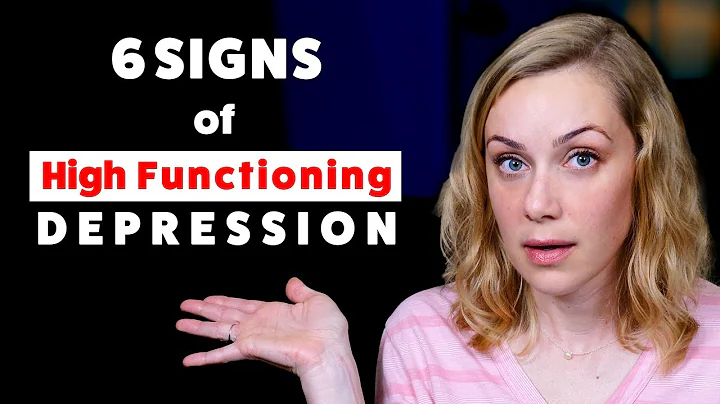
The number of words in this article is 3800+|It is expected to take 10min to read
article|Gao Junfeng (Simple Psychological Certification·Psychological Counselor)
When chatting with others, will you avoid eye contact?
Do you often delay in the face of difficult tasks?
Will you often look at your phone when attending a dinner? Will
set the clock very early because of concerns about being late?
Will you keep confirming that everything is fine?
When you feel anxious, will you do something distracting?
When you do something you are unsure of, will you carry your own "lucky thing" with you?
When you go on a trip or go shopping, do you carry your reading materials with you?
If there is, it may mean that you have adopted some hidden emotional avoidance strategies.


What is emotional avoidance
Emotional avoidance is a concept in cognitive behavioral therapy (CBT) and refers to any strategy people may adopt in order to avoid strong emotions or prevent emotions from becoming too strong.
The emotions here can be negative emotions or positive emotions, but they are generally mainly negative emotions, such as anxiety and fear.
Anxiety and fear means that people are aware of danger. Whether at the realistic level or the imaginary level, people's reactions when facing danger are "fighting", "escape" or "stagnation".
Emotional avoidance refers more to the strategy people only adopt when they want to "escape", that is, avoid "danger".
Some emotional avoidance strategies are obvious, such as people with social anxiety will refuse to attend parties, but when people cannot "escape", such as having to speak in public at work, having to drive alone at work, worry about exams automatically emerges in their minds...
These situations may cause people to react strongly, but they have to face them. At this time, people usually adopt many hidden emotional avoidance strategies, or even themselves do not realize , such as the behaviors listed at the beginning of the article.

hidden emotional avoidance strategies can be roughly divided into the following three categories.
1. Subtle behavior avoidance
refers to the subtle avoidance behavior that people take when they expect a situation to bring strong emotions and cannot escape.
For example, constantly procrastinating to prepare a paper or a work report to be submitted, it is very anxious when you think of the terrible consequences of the paper not being passed or the work report being criticized. Procrastinating preparation can at least relieve anxiety at the moment.
Other subtle avoidance behaviors include choosing the most corner of the classroom or conference room; colleagues make phone calls for a long time, go to the bathroom frequently or eat non-stop when having dinner;
Avoid drinking beverages containing caffeine or vigorous exercise (for individuals with panic tendencies); arrive at the date location a lot early; avoid touching the sink or toilet (for individuals with compulsive tendencies), etc.

2. Cognitive Avoidance
The "cognition" here refers to all strategies adopted to avoid the possible thoughts, recalls or pay attention to the events that cause pain , and points more to the dangerous situations imagined in the mind.
Distraction is the most common cognitive avoidance. When anxiety-provoking thoughts or pictures appear in the mind, hurry up and do something else to prevent yourself from thinking about it, such as reading, watching TV, and chatting with others.
"ignoring" is another common cognitive avoidance, that is, pretending not to be in a certain scenario and pulling yourself out of an anxious scene psychologically. For example, when giving a speech on stage, imagine that the audience outside the scene does not exist, and ignore the other person when chatting with others.
Individuals with general anxiety tend to be worried continuously, constantly confirm that everything is fine, and constantly think about future plans.
Individual with a compulsive tendency will try to prevent ideas from entering your mind, and repeatedly recall the process of locking the door after locking it.
Individuals with depression tendencies will force themselves to think about only the good aspects, and after experiencing negative events, they will repeatedly recall the details of the event, their reactions to the other party, and think about the way they can cope with.
3. Security signal
refers to any item that people can carry on themselves and relax in an anxious and nervous situation. Although these items usually have no practical effect, they have "psychological significance" to the user, similar to "amulet".
These items can relieve users' anxiety and make people feel comfortable and safe in "dangerous" situations.
, for example, water bottles and empty medicine bottles carried by individuals with a tendency to panic; mobile phones or reading materials carried by individuals with a tendency to generalize and anxious; sunglasses or masks worn by individuals with a tendency to social anxiety; etc.

In addition to these items, Sometimes Another person will also become a "safety signal" . For example, individuals who dare not drive alone require their partner to sit in the passenger seat every time they drive, and the partner becomes a "safety signal".

Emotional Avoidance Strategy Is it good?
Emotional Avoidance Strategy Everyone uses it, countless large and small, but they are different.
Negative emotions make us experience fear, anxiety, and irritability, make us feel dangerous, make us feel uncomfortable, and even cause physical discomfort. We will take various ways to stay away from (avoid) negative emotions, which is very normal and functional.
But everything has two sides, and emotional avoidance strategies are no exception. We will realize that obvious emotional avoidance behaviors can cause a lot of trouble, which makes us unable to go where we want to go, do what we want to do, and meet people we want to meet.
So what impact will the hidden emotional avoidance strategy as described above have on us?
These hidden avoidance strategies are indeed useful in some situations. It can give us the courage to face "dangerous" situations without completely "escape".
It can quickly reduce the negative emotions we experience. According to the principle of negative reinforcement , revoking an aversion stimulus will increase the frequency of behavior, so people will frequently adopt these avoidance strategies.
However, long-term use of these avoidance strategies may also have some adverse effects and will hardly have good results in the long run.

avoidance prevents habituation
When people are constantly in uncomfortable situations, such as certain social situations or horrible thoughts/pictures, these situations can trigger negative emotions such as anxiety.
If you continue to face these negative emotions, the intensity of emotional reactions will gradually decrease due to the body's adaptive function until you no longer have negative emotional reactions to these situations. This is the process of habituation.
However, the avoidance strategy separates us from negative emotions, which will lead to a strong emotional impact when we enter a stimulating situation. The intensity will not only not decrease, but will even increase as the effect of the avoidance strategy gradually weakens.

Image source: "Lawrence of Arabia"
Avoidance hinders the verification of catastrophic expectations
Many situations are marked by our brains as dangerous.
It may come from its own negative experience, such as a failed speech, being named but unable to answer the teacher's questions, a report written by the leader, being complained about by others because of being late, a minor accident while driving alone, a cold reception by others during a dinner party, or a speechless embarrassment.
may be derived from the experiences we observe others, or even just a warning from our parents and teachers.
Our brain is both loyal and responsible. Protecting the survival and safety of an individual is its most priority task. When these situations are marked as dangerous, it will prevent you from entering these situations with strong negative emotions (such as anxiety).
If people cannot escape these situations, people will use various avoidance strategies to arm themselves, as if only in this way can the danger be reduced.
But is this really the case?
Sometimes our brains emit false alarms. Perhaps the real situation is not that dangerous, and the result is not that terrible.
When we let go of avoidance behavior and face the uncomfortable and exciting situations wholeheartedly, we may find that the expected catastrophic results have not appeared, which provides the brain with new experience.
The brain is sometimes rigid and not flexible, and needs to be taught over and over again. When new experiences are constantly repeated, the brain learns that this situation is not dangerous, and it reduces priority and will no longer pay special attention to this situation. This is also a process of elimination.
and avoidance behavior maintains fear of the situation.

Cognitive avoidance makes people unable to live in the present
Whether it is to withdraw themselves from an anxious situation, to worry/plan all day long, or to deliberately ignore the other person during conversation, or to repeatedly recall negative events that have occurred in the past.
These cognitive avoidance strategies will make people leave their current life at the psychological level and cannot enjoy the colorful colors, real taste of this world, the flow of interpersonal emotions and the subtle and delicate texture.
People are exhausted just to deal with the dangerous world in their imagination. All the senses of seem to have lost their function, the mind and the body are separated from . On a certain level, people "disappear" from their current lives and their loved ones. What else can we do with

?
Emotional avoidance strategy is important to everyone and is adaptable to some threatening situations. It constitutes people's style of behavior and has become an important part of people's individual uniqueness.
If the results produced by these avoidance strategies meet our expectations and do not cause trouble in life and work, of course, they can continue to be maintained.
On the contrary, if these strategies affect our goal achievement in the long run and damage our functions, some changes may be needed.

First of all, it is recommended that you list your emotional avoidance strategies. Since many avoidance strategies are hidden and not easy to be noticed, you can invite relatives, friends or consultants to complete them together. After
lists the list, analyzes the impact and pros and cons of each avoidance strategy one by one, and under what circumstances is this avoidance strategy adaptive or non-adaptive, so as to make a judgment on whether it needs to be changed.
The following suggestions may help when you try to change.
uses a close mode to fight avoidance
First of all, you need to judge whether the activities and situations that may cause your negative emotions are real dangers. If
does not have one, but you are still afraid, you can adopt this model. tries to participate in it without using emotional avoidance strategies, especially subtle emotional avoidance strategies.
For example, sitting in a conspicuous position in the classroom, putting down your phone during a meal, driving alone, starting a paper immediately, not escaping when an anxious thought or picture appears in your mind, but immersing it in it and thinking it complete, etc.
and other things are not easy to do, especially at the beginning, when not using emotional avoidance strategies, negative emotions may quickly increase. You can practice step by step, the scene can range from easy to difficult, and the time can range from short to long.
In addition, Your courage, perseverance and motivation to hope for change are also very important. If necessary, you can also seek help from professionals while trying to change.

Return to the present
This method may be helpful for individuals who often use cognitive avoidance strategies.
When we are aroused negative emotions such as anxiety and fear in a stimulating situation, can find something from daily life to remind you to turn your attention back to the present, anything is OK.
For example, a ring, such as your breathing, you must be able to carry it with you, and make sure that the things you choose can remind you to anchor in the present moment easily and quickly.
After anchoring to the present moment, use your facial features to choose to listen to a sound (car sound, bird song), look at an object in front of you (computer keyboard, chair), feel the touch of your hands, and try to use your five senses. The purpose of is to bring you out of your mind and return to the present.
keeps doing this exercise, connecting the clues (rings, breaths) with the moment and forming automation.
After returning to the present, quickly realize whether your emotions, thoughts and feelings just now reflect what is happening, and then determine how you should deal with it.
Image source: Pexels Unsplash
Typesetting: H3
Editor: Air Pineapple

Click on the business card to see other articles of the author
Simple psychology free hotline mini program is online!
has emotional distress, stress anxiety, emotional problems
Click here to talk to us about

David H. Barlow, Todd J. Farchione, Christopher P. Fairholme, Kristen K. Ellard, Chiristina L. Boisseau, Laura B. Allen, Jill Ehrenreich-May. (2020). A guide to the therapist's interdiagnostic treatment of emotional disorders (translated by Wang Chenyi et al.). Beijing: China Light Industry Press.
David H. Barlow, Todd J. Farchione, Christopher P. Fairholme, Kristen K. Ellard, Chiristina L. Boisseau, Laura B. Allen, Jill Ehrenreich-May. (2020). Self-help manual for the unified cross-diagnosis treatment of emotional disorders (translated by Xie Qiuyuan et al.). Beijing: China Light Industry Press.
Bessel van der Kolk. (2020). The body has never forgotten (translated by Li Zhi). Beijing: Machinery Industry Press.
👇Pull
Light up "looking"
Learn to be friends with emotions together











